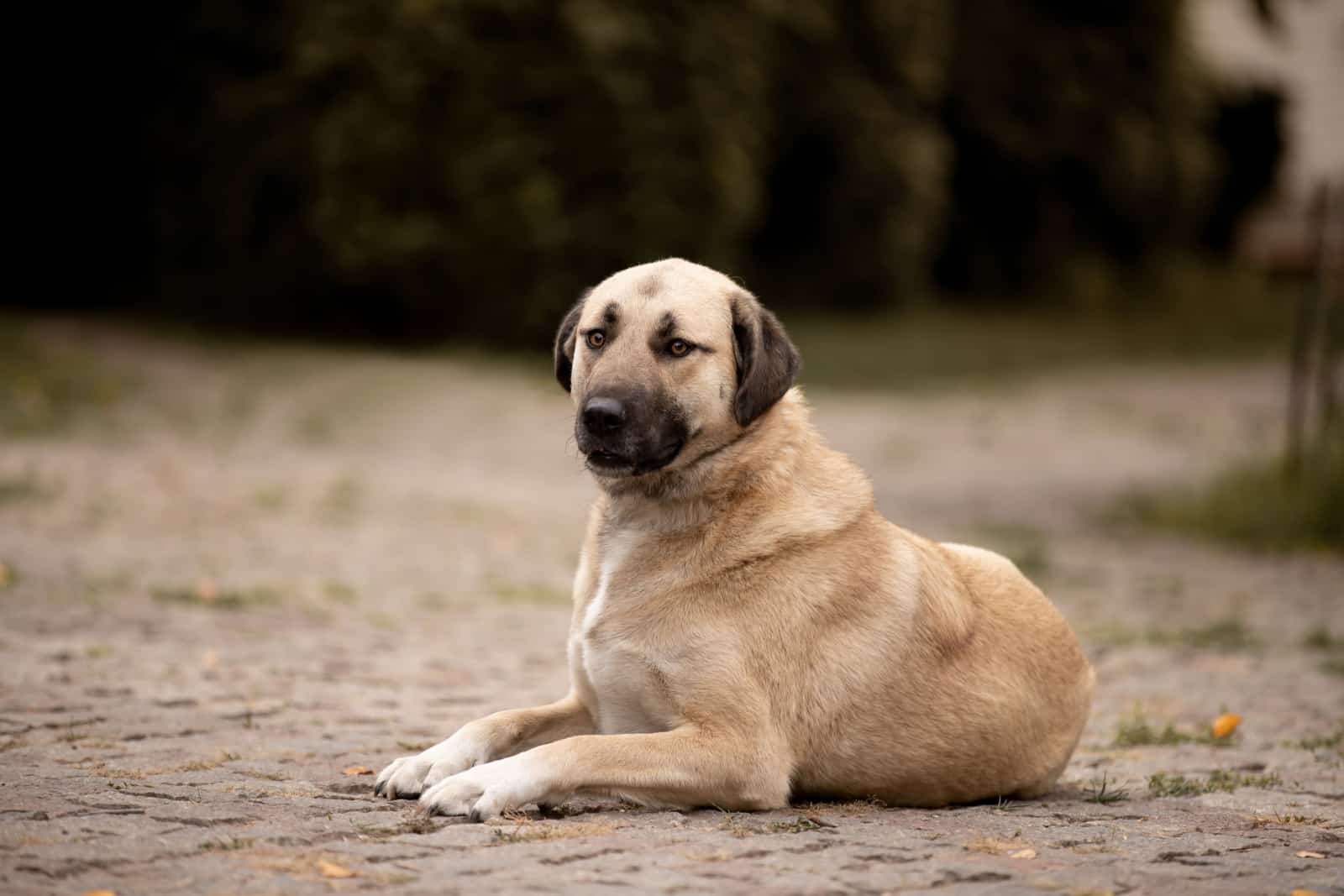The Kangal, a breed similar to the Anatolian Shepherd, is a big ol’ doggo originating from Turkey’s Sivas province, but many potential owners always wonder how big do they truly get? That’s where the Kangal growth chart comes in.
The Kangal growth chart is here to help you get a better idea of the weight and height ranges that the average representative of the breed would reach at certain points throughout his life.
It’s meant to be used as a guideline to what’s normally considered acceptable and not leaning towards malnourished or obese in terms of weight, or if there are any abnormalities in terms of height.
This chart, together with a feeding chart helps ease first time dog owners into handling a dog properly without needing too much experience first hand.
They’re a great starting point once you end up deciding on which dog breed you’re determined on getting as they serve as a brief summary of your duties in regards to his overall growth and care.
Also keep in mind that even if your dog is a little bit above or below the estimated averages, it doesn’t instantly mean that something might be wrong,
So, if you’re looking to find out exactly how this amazingly tough and incredibly old dog breed grows throughout the years as well as what affects it, and a number of other frequently asked questions regarding the Kangal’s size and habits, read on.
The Kangal Growth Chart
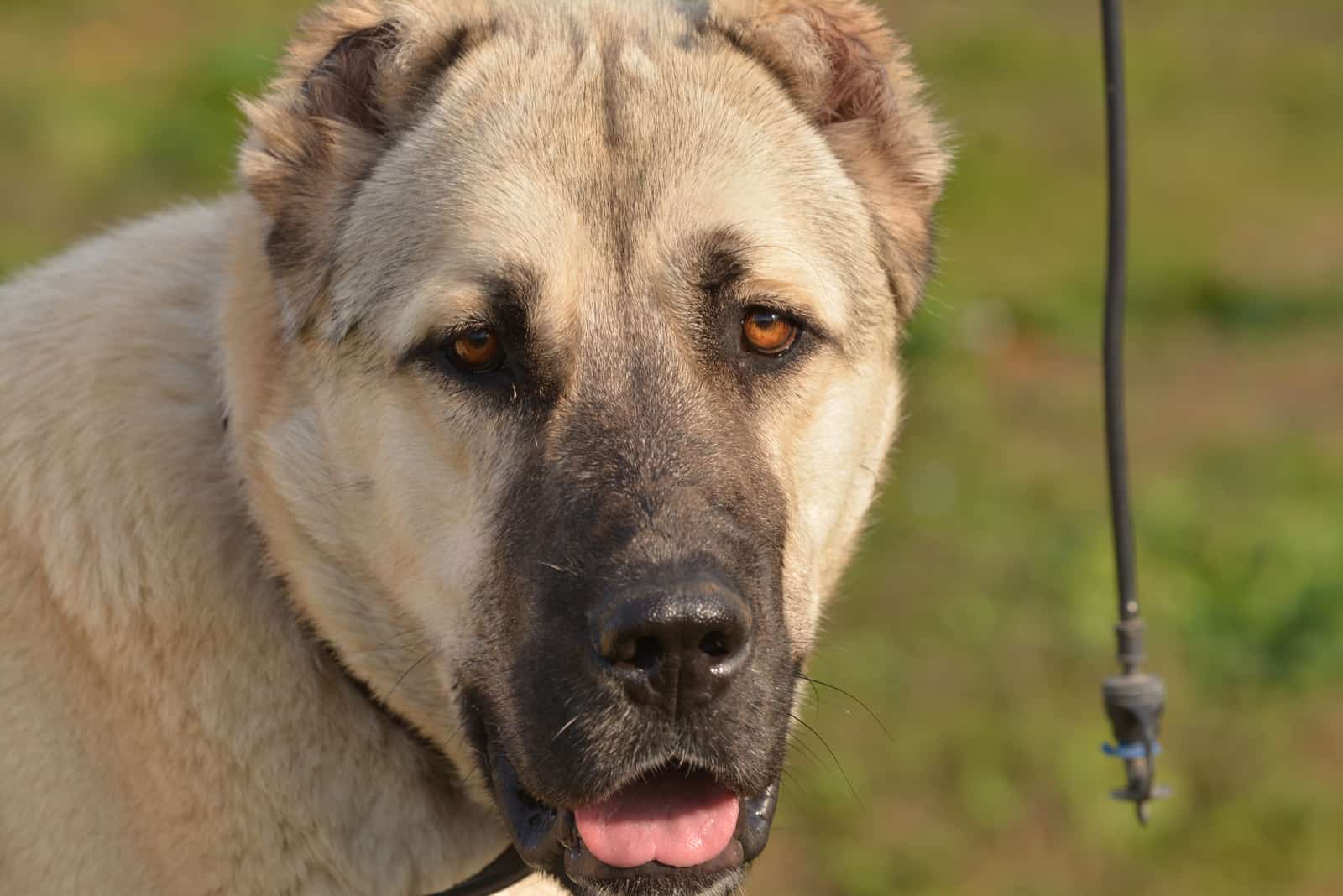
[table id=690 /]
As you can see from this puppy growth chart, the Kangal experiences a rather rapid growth cycle for the first 8 months of life, after which it goes through a swift decrease where it slows down by almost half the earlier increments.
That’s nothing unusual though as that’s par for the course for this breed.
Even in their early puppy years, they’ll be growing at an incredible rate, a real ‘blink and you’ll miss it’ type of moment.
It’s all due to the calorie rich food that they need to be fed to keep up with their standard growth rate, one that they end up reaching the peak of somewhere around month 14 to month 19 of their life.
After all, they need to pack some muscle on top of their growing bones so they can stay in shape, as most shepherd dogs and other larger dog breeds often need to, considering their final size.
And, while their weight gain may start slowing down around month 8 or 9, they’ll still continue to grow at a steady rate until they reach their average height of around 27-29-ish inches.
As far as the food is concerned, for this puppy period, you’ll be using the nutrient and calorie-dense dry dog food to help facilitate the growth of your pupper as mentioned earlier.
Around 2 to 3 cups per day of adequate puppy kibble is fed to younger Kangal dogs on average, split apart into 3 portions to help teach them how to pace themselves. That should keep your dog on track with the dog weight chart shown above.
The amount needed will go up relatively quickly too, up until the first year of age at which point you’ll even out at about 3-4 cups of high quality dry dog food a day spaced out into 3 portions, potentially more, but smaller portions depending on your dog’s diet.
When he hits his senior years around age 9-10, the amount of food needed is going to get reduced to around 3 cups, maybe 2, depending on how slow his metabolism gets.
Some dogs may even end up swapping over to softer dog food options that are easier to digest for an older dog.
Kangal Growth Over The Years
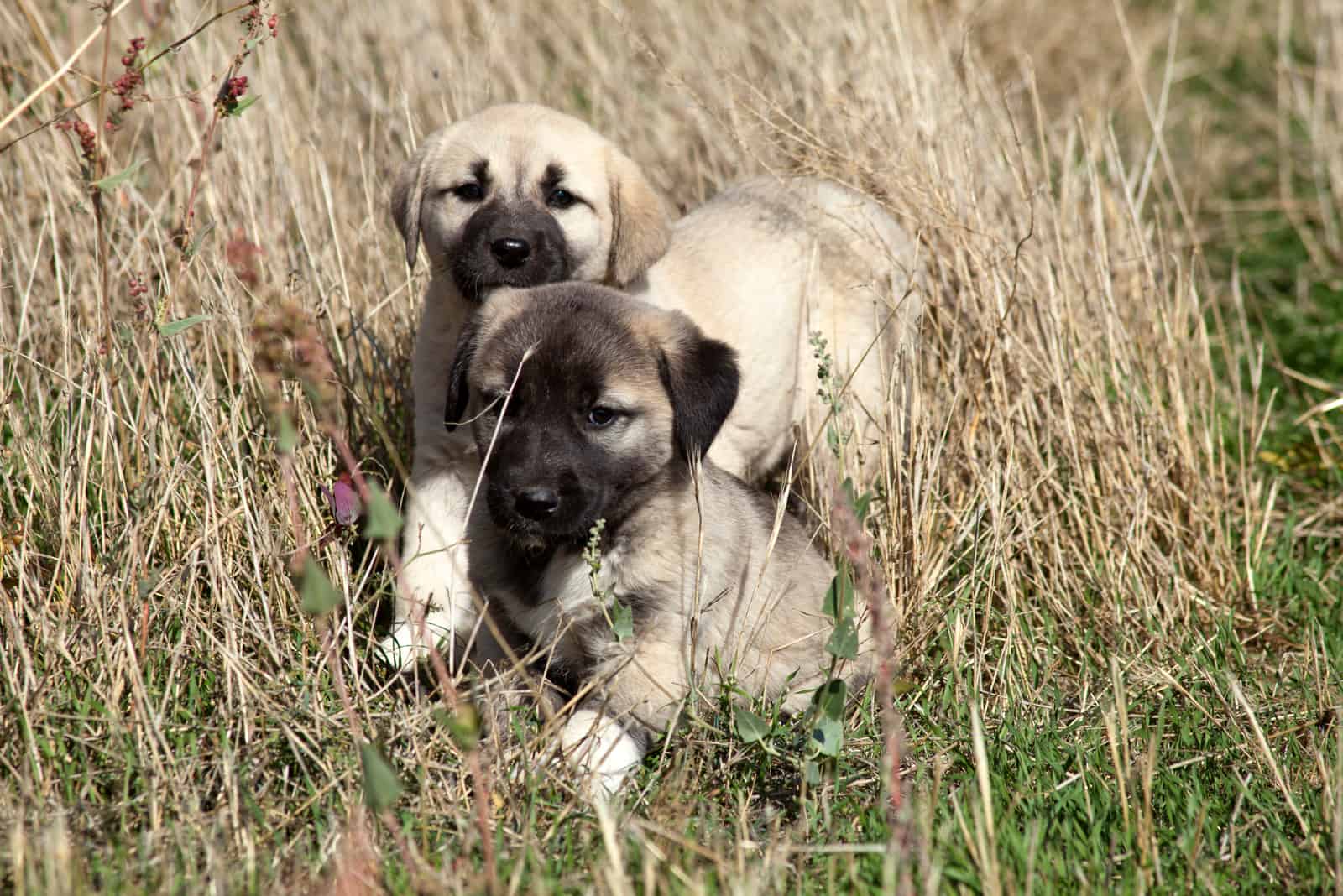
The Kangal Shepherd dog’s growth happens over the span of 14 to 19 months on average, with some blooming early and others a bit later.
As we’ve seen above, their weight and their overall size will change drastically in their puppy period and it can be hard to keep track of, especially in regards to how much food they’ll need.
However, it’s not all that hard as it’s mostly just a bit of trial and error. Nothing is ever going to be perfect the first go around.
However, if you’re looking for some more precise info, here’s how members from the Kangal dog breed need to be treated from puppyhood and all the way up to their senior years.
0-2 Weeks Of Age
As is the standard for this particular period, you won’t be doing much of anything. This is where the dog’s mom takes care of most of the work and you, if you’re a breeder, are going to be taking care of her.
While she feeds him with her milk, you’ll be feeding her with more food than usual, with most breeders resorting to free feeding to an extent so the mother can keep up with her entire litter.
As for the pup in question, he likely won’t be moving around much and will rely on things like his mother’s heartbeat and her warmth to recognize where to find a safe space to rest and find nourishment.
At this stage, the pup is also relatively lightweight, weighting only a couple of pounds, if even that.
If the mom rejects him or any of his brothers and sisters, you’ll have to step in.
You’ll want to replicate the feel of a mother’s proximity which is usually done by using a heating pad as a surface for the pupper to sleep on and a milk replacement to feed him over a bottle to help continue his growth.
There are a few optional steps you can do too, namely an old clock or anything similar that produces a ticking noise in a set rhythm or anything else that can replicate a heartbeat, as well as something fluffy to cover the pad with which can replicate the fur of the pup’s momma.
3-8 Weeks Of Age
Once the growth of Kangal pups reaches this stage, they’ll finally start becoming a little bit more independent, not relying on their mom to handle everything and moving out to explore this whole new world on their own.
This is also the period where a little bit of basic behavioral training is recommended so some of it sticks for later down the line, to set some sort of foundation.
Some early socialization at this stage is important too as this is the best period to be making good first impressions on your pupper.
It’s also when you start to transition the dog away from his mother’s milk and over to puppy kibble.
There’s a trick here that breeders use to do just that without any fuss from the Kangal pups, or any pups in general, a trick that’s worth learning for dog owners as well, which is gradual food transition.
It’s nothing top secret and is something a lot of pet parents are urged to learn as it’ll make their lives a lot easier.
Essentially it starts with a mixture of 3 parts liquid, 1 part dry dog food so it’s nice and soft and the pups don’t mind it as much.
Then, as days pass, you gradually increase the amount of kibble in the mix until the liquid is entirely eliminated, at which point your doggo should’ve taken to his new brand of dog food without even noticing.
This works not just with this particular puppy period, but when you want to swap your dog over to a whole new brand of dog food from an older one as well.
As he nears week 8, he should have the basics of training sorted so he can be ready to get rehomed.
8-12 Weeks Of Age
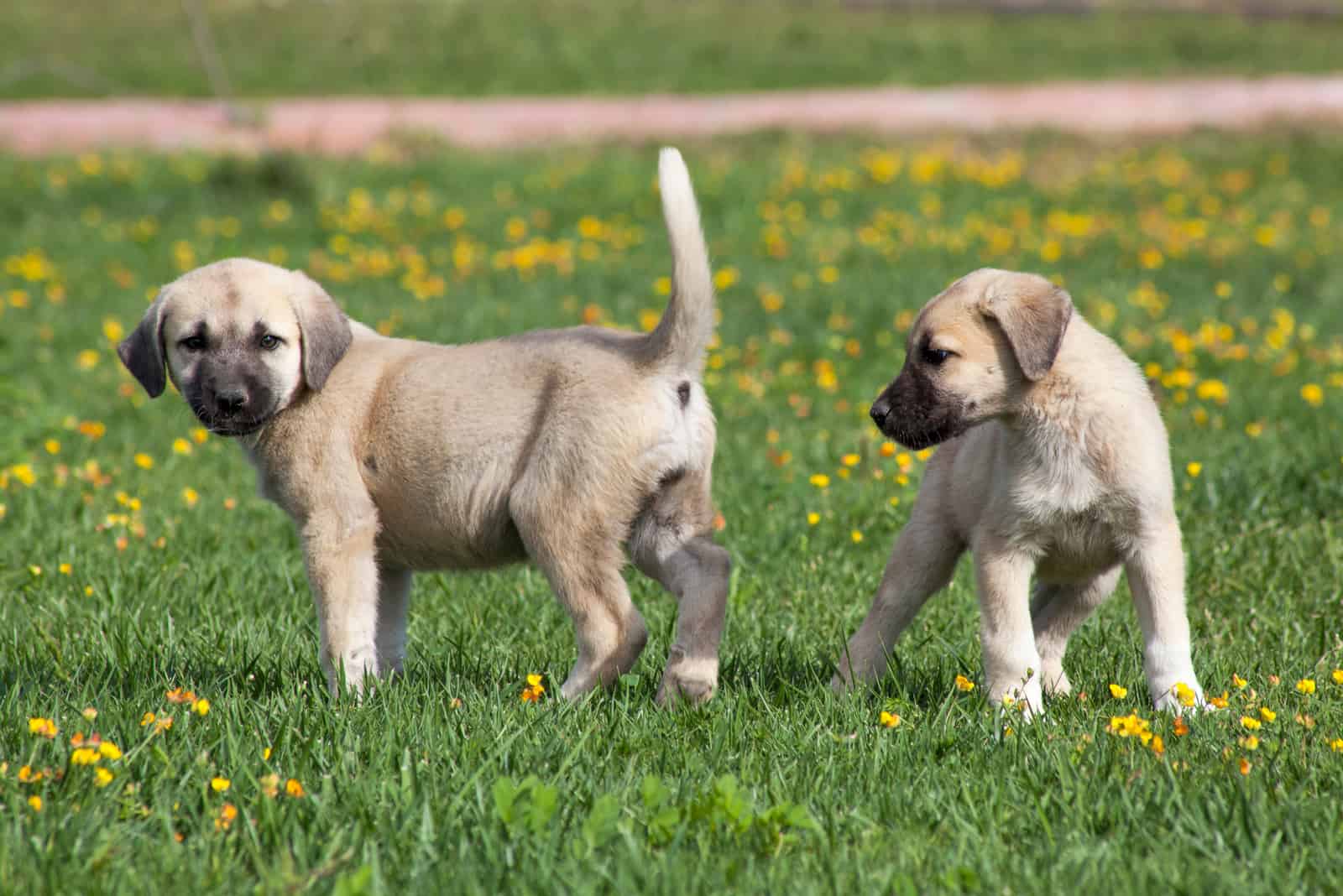
At around week 8, the puppy is ready to be sold to the new owner and rehomed, which is likely where you come in.
This is where you take over the caring duties for your pupper and adjust him to his new surroundings.
Make him a comfortable bed. It doesn’t have to be anything too special at the start. A simple cardboard box should suffice, but make sure it’s nice and comfy and that you can tend to his needs.
Listen to what the breeder tells you in regards to the dog’s needs and habits. It’ll help out a lot in establishing initial trust with the pooch.
And try to stick to the food that the breeder used if you can, at least while he’s a pup still to make things easier on you and to prevent potential rejection of whatever other food brand you’ve had in mind.
His weight should be coming along nicely and you may see a small boom in this specific month, so don’t be surprised by any sudden growth spurts that your pupper may exhibit.
And, naturally, when you can, take him out to play with other dogs, preferably his age, as well as young kids so he can learn to temper himself around others and how to properly behave.
4-8 Months Of Age
Within this period, you should expect your dog to go through a rather massive bulking phase as the weight keeps piling on until it reaches a peak by the end of the eighth month where it’ll slowly start to taper off.
Sure, it’ll continue past it, but this is the most rapid weight gain period of your dog’s life.
Keeping up with it may feel hard at the start, but once you hit your stride, you shouldn’t have much issue, if any at all.
As always, it’ll take a bit of trial and error, but that’s just par for the course.
He’ll also start becoming more physically active so he can start turning that bulk into muscle.
He’s no bodybuilder, but believe me when I say that a fully grown Kangal is arguably the closest thing you’ll see to one in the canine world.
Other than watching his weight and what he eats, you’ll also want to go through his routine medical examination, namely the deworming processes that should be happening every few months or so to prevent any potentially serious problems from popping up.
Dog owners do it even if the result shows up negative as parasite prevention in such an early age takes precedence.
9-14 (19) Months Of Age
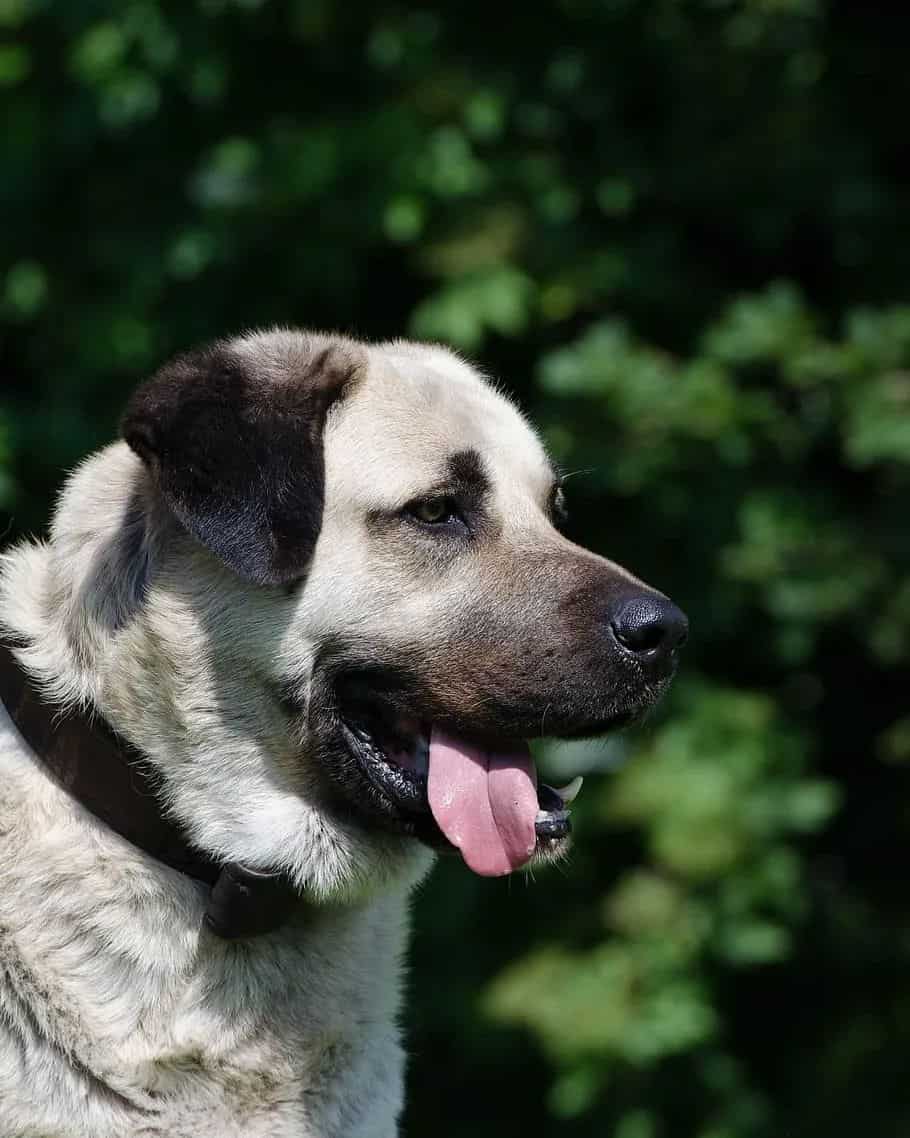
Not much is going to be happening in this period aside from the remainder of the bulking process that would’ve slowed down by now.
The one significant bit may be the fact that your Kangal is going to reach sexual maturity somewhere within this period and will also reach the peak of both his height and weight which will signify his transition into a full blown adult.
This usually happens somewhere between the 14th and 19th months and it varies from dog to dog.
Your job still remains the same though, making sure he’s healthy, that he’s not over or underweight and that he’s eating properly.
Naturally, there’s some grooming that will need to be done too from time to time, mostly revolving around his undercoat that sheds twice a year.
Adulthood – Month 14(19) To Year 9
The first thing that most dog owners do once their dogs move from being a pup to becoming a full fledged adult is starting on that gradual swap from puppy food to more adult oriented dry dog food, one that’s less calorie dense.
After all, he’ll no longer need all those calories as he has now fully developed and can function off a more balanced diet.
It shouldn’t pose too much of an issue, especially if you pick an adult option of the same brand, but you’re in no way obligated to do so. The method will take care of the transition process on its own.
Aside from that, it’s just business as usual involving the standard caretaking practices of a dog like daily walks and exercise and the love and attention you can spare him.
Kangals normally need around an hour of engaging physical activity to satisfy their bodies’ needs for exercise.
Naturally, you’ll want to keep up with his health as well, so if you notice anything that may feel out of place, be sure to check with your dog’s vet to determine whether it’s an issue of concern or not.
At around year 5, you’re also going to start slowly reducing the amount of food he ingests daily as he’ll start growing older and his metabolism will slowly start slowing down.
While it won’t be anything too drastic at the start, it’s best to start early so your dog isn’t at a risk of gaining a few extra pounds that may push him toward obesity.
The Senior Years (Year 9 And Onward)
The twilight years of a Kangal, though ones where he’s still relatively active compared to other dog breeds.
You’ll likely be replacing his adult dog food for something more digestible by senior dogs, though the adult stuff you’ve been using so far can still work just as well, this’ll just make it a bit easier for him.
If you do go through with the swap, the gradual introduction method is the best one still. He’ll barely notice a difference.
The rest is just checking up on his health which may start getting slightly worse in these years, especially when the back problems start kicking in due to being a large dog breed.
Make sure to give him the best years of his life for as long as he has left in this final period of his life.
How Big Do Kangals Get?
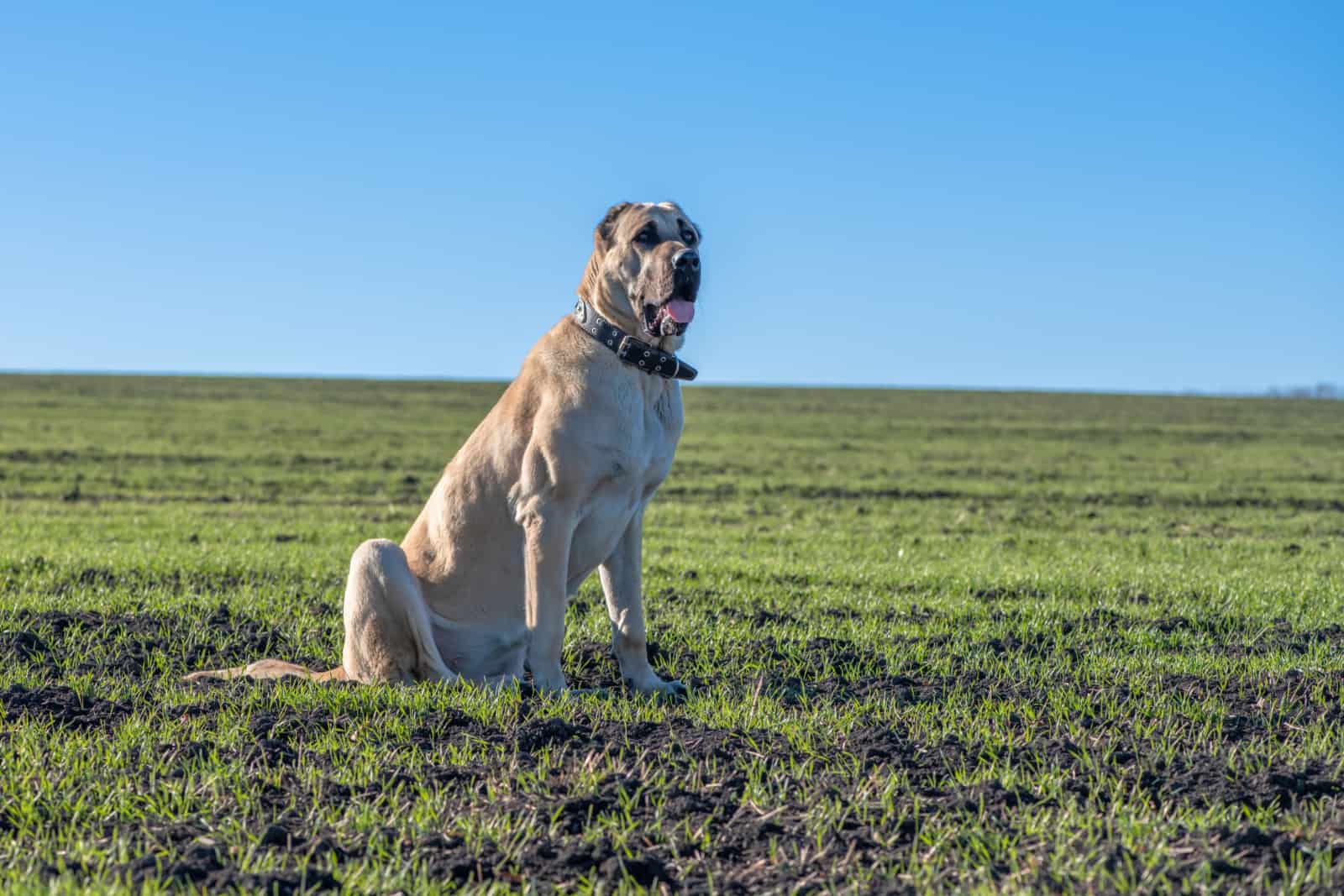
Kangals have a rather big discrepancy between their puppy and adult sizes.
They’re quite small as pups, but absolutely massive when they hit their peak at around month 14-19.
When measured from around his shoulder blades, an adult Kangal comes out to around 30-inch inches for males, and around 27-28 inches for female Kangals.
Of course, this is the average, and your dog can be a few inches up or down. It all depends on a few factors like proper nutrition and a few others.
Weight wise, they come up to somewhere around the 140 pound range, give or take a few pounds.
When Is A Kangal Considered To Be Fully Grown?
Well, most people consider the Kangal to be fully grown by month 14 to 19, an estimate deduced from the fact that the Kangal’s size classifies him as somewhere between the large and giant dog breed categories.
What Affects A Kangal’s Growth?
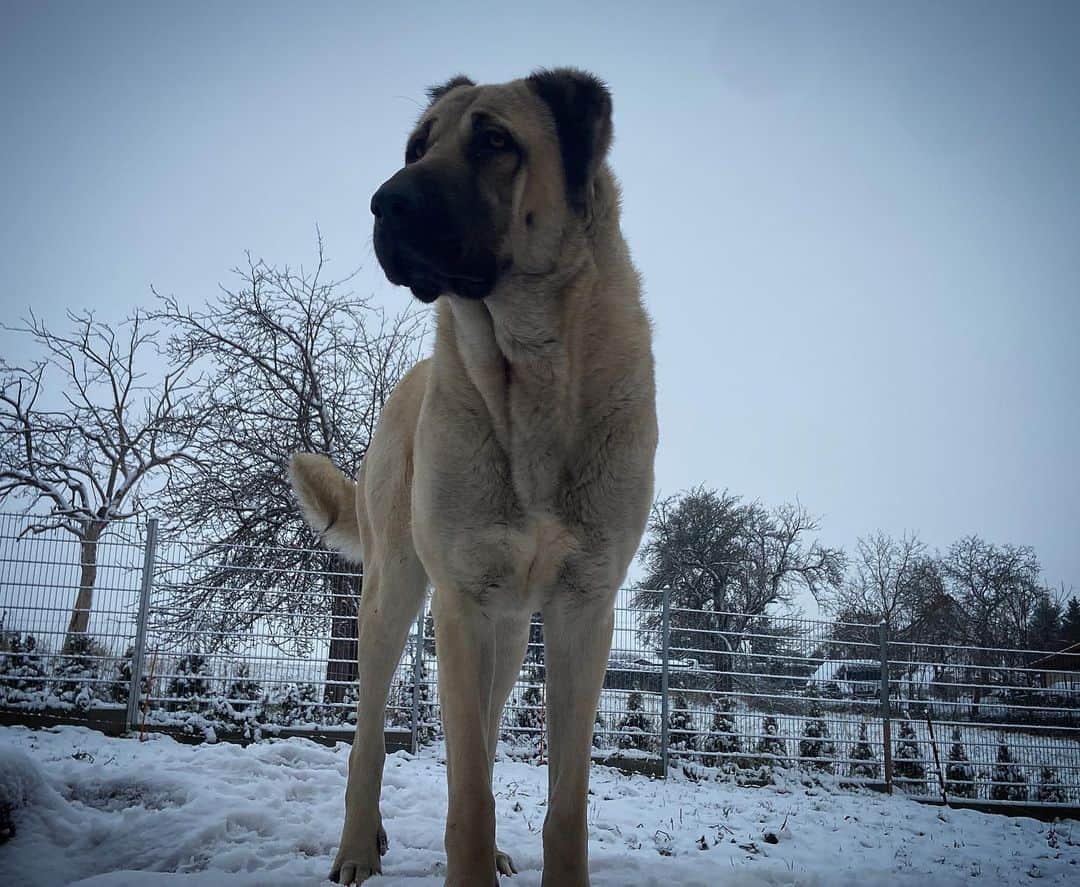
There are many factors that affect a dog’s growth and the Kangal is no exception, which is why the Kangal growth chart isn’t to be taken literally, but used as a guide toward determining whether your dog is developing at a healthy rate.
But what are these factors? Well, here are a few of the most influential ones in your dog’s overall growth and health:
The Genetics
Naturally, genes are always at fault for everything good and bad that happens within the body.
They don’t just determine your dog’s coat color, but they also determine the speed of the dog’s metabolism as well as the likelihood of contracting specific disease and the dog’s mental and physical capabilities.
It’s arguably one of the biggest deciding factors when considering a doggo’s growth.
There are no two dogs that are exactly the same after all, and genetics make sure that they remain unique in their own right.
Some of these genetic problems are easily alleviated through the adjustments of a dog’s lifestyle or diet.
Though, some others simply linger with currently no ability to eliminate them, like a dog’s likelihood of contracting a specific disease and the like.
However, proper nutrition should be able to handle this problem as well as some of the other problems in this list with ease and help you maximize your dog’s lifespan as best as you possibly can.
His Choice Of Food
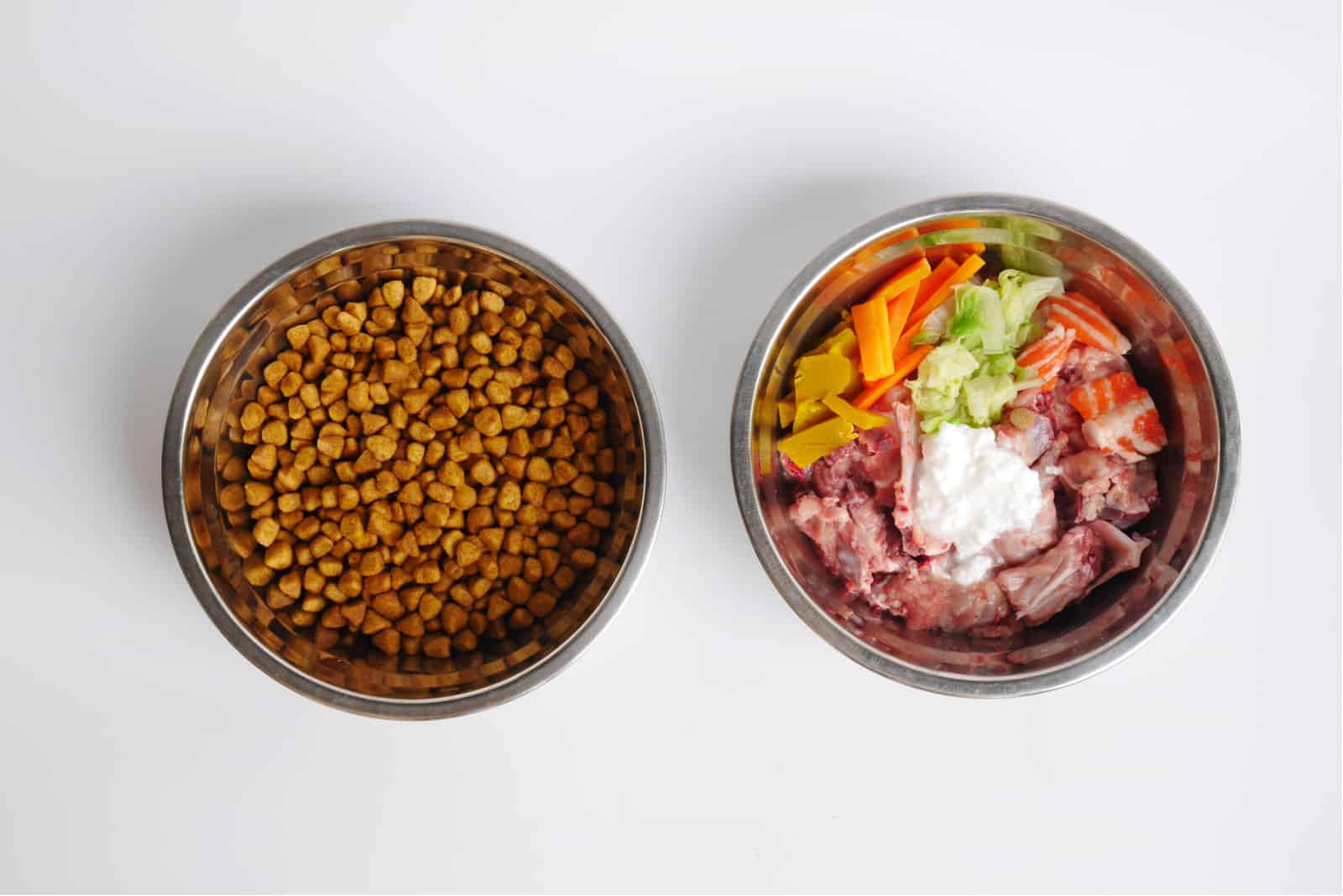
Naturally, what a dog eats always plays a big part in his development.
You’ll need to provide your dog with a balanced diet to optimize his chances of growing into a healthy adult.
Once again, every dog is different and will like different things, don’t be discouraged if he doesn’t end up liking a particular brand of dog food or a certain flavor.
Before you start, if you can afford to do so, it’s best to consult a certified pet nutritionist or a veterinarian on the matter of healthy dieting.
Though, you can always learn a few basics of dog nutrition off the internet as well as whatever advice you get from the dog’s breeder and you should be decently set unless the dog ends up developing special needs due to allergies or a health issue.
Some of the most important things you want in a properly balanced meal are a good protein and some healthy carbs to go along with it.
The most liked protein by dogs tends to be either chicken or beef, both extremely nutritious and great, relatively neutral options to serve as a base for any potential spices and other flavorful ingredients that brands may want to experiment with.
As for carbs, people usually opt for either sweet potatoes or something like brewers rice as healthy options.
Other than that, for pups in particular, you’ll want DHA and EPA on the ingredient list. These two are key nutrients for proper cognitive development and function and are a must have.
Aside from those, there are other omega 3 and 6 fatty acids which help improve the quality of your dog’s skin and fur.
Then you’ll want calcium and phosphorus, important ingredients for proper bone and cartilage development in young dogs.
In order to maintain proper joint health however, something that’s extremely important to have in dog food, especially for large and giant dog breeds like the Kangal due to bone problems later on in life, are glucosamine and chondroitin.
These two are responsible for maintaining good joint and bone health and will help lessen the effects of bone problems in your dog’s senior years that happen due to the dog’s unfavorable center of gravity.
Prebiotic fiber and probiotics are a must for good digestive health and a strong immune system.
Finally, lots of good vitamins and minerals to round out the daily nutritional needs as well as antioxidants which, while beneficial to heart health, aren’t mandatory.
As for dog food types, you’ll want to keep to dry dog food for most of the dog’s diet as the kibble usually doubles as a great plaque and tartar cleanser.
You can mix in wet dog food every now and then as well as some of the more natural stuff, but the former is known to stain a dog’s teeth and is usually pretty expensive while the latter is harder to calculate into a daily diet.
If you want to soften your Kangal dog’s kibble up, you can always pour some gravy or broth over it and he’ll devour it.
The Amount Of Exercise He Gets Daily
The more your dog exercises, the better he’ll be at maintaining a healthy weight if he still eats a relatively balanced diet.
Not to mention Kangals are usually well built so they’ll want to get their fair share of daily exercise.
An hour or so of moderate to high activity should be good, give or take a little bit.
Just make sure not to overdo it as that can prove detrimental.
Does Neutering Or Spaying Affect His Growth Too?
It certainly does as the hormones produced by their reproductive organs control the dog’s growth plates.
You should wait at least until the dog’s first birthday to even consider a spay or neuter, though you should still ask the doctor if it’s okay as some dogs may mature differently than others.
FAQs
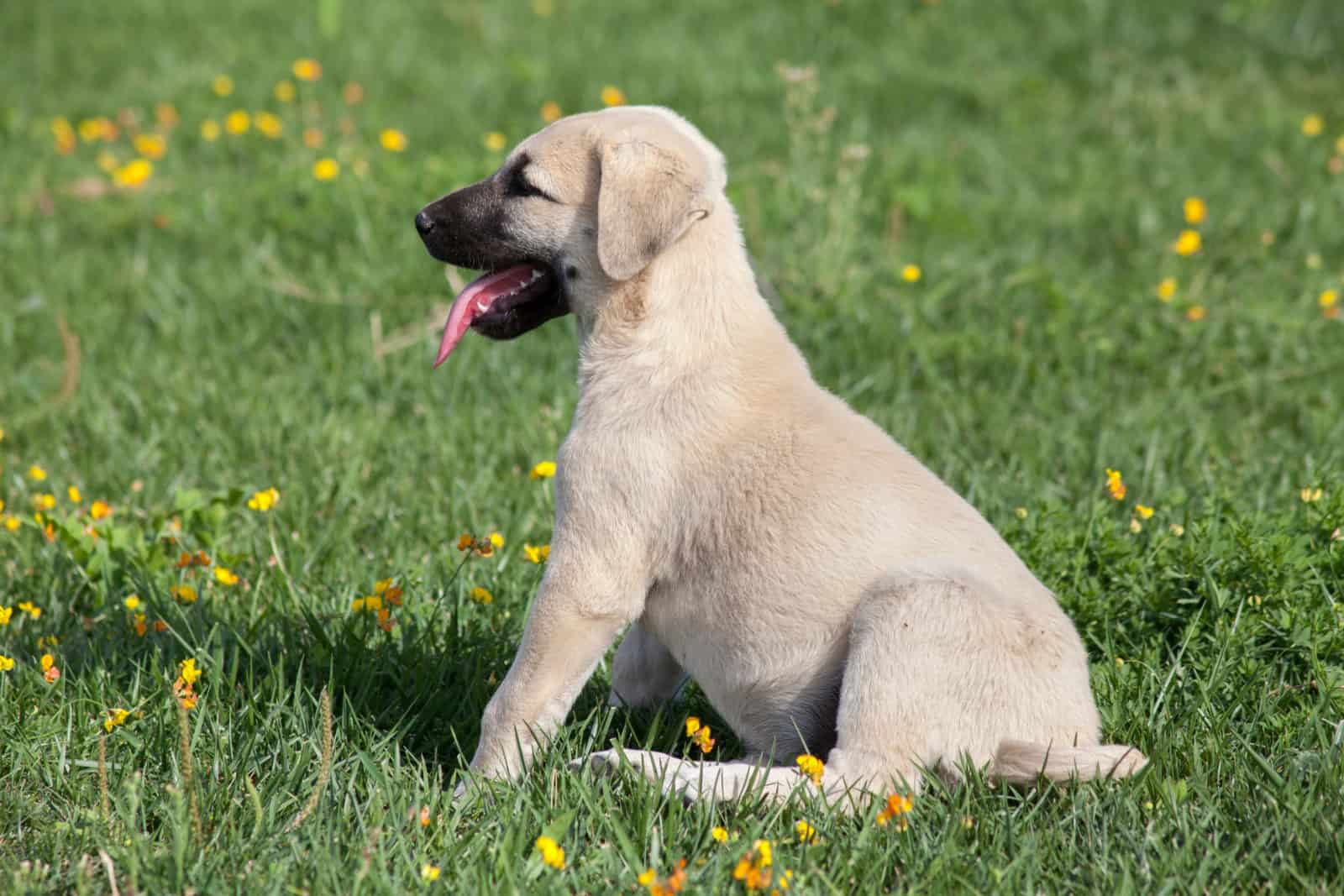
What’s The Average Price Of A Kangal?
Well a Kangal puppy won’t run you too much, somewhere between $500 to $2000 depending on the purity of his bloodline.
While they may be one of the oldest breeds and make for excellent guard dogs, they’re not nearly as popular as some of the other options like the German Shepherd or a Rottweiler, making them a real good pickup for an affordable price.
Just keep in mind that the purchase price isn’t the only expense and that there are plenty of maintenance costs that come after ,especially during the dog’s first year of life.
What To Do If My Kangal Is Under Or Overweight?
If your doggo doesn’t fit the weight range at a specific age, you shouldn’t be too worried if it’s just a little off.
It can fall out of whack a little here and there as it depends on the factors stated prior, but if the difference is massive or if it’s not falling in line after a little while, then there may be some underlying issue afoot, whether dietary or medical.
You’ll have to do some lifestyle changes for your pupper in order to get him back on the right track, or you may need to give him some medication if something like an internal parasite may be to blame.
Is The Kangal AKC Certified?
Yes he is, the American Kennel Club recognized it around 1996, around the time when the breed was first introduced to the United States.
Are Kangals And Anatolian Shepherds The Same Breed?
Yes and no. There’s a lot of debate about it, and some have recognized the Kangal as separate from the Anatolian Shepherd while others have grouped them up as the same breed despite a few minor, but evident differences.
They do usually have similar food preferences and methods of raising, so you won’t end up getting confused either way.
In Conclusion
The Kangal makes for an amazing family dog due to his great physical form and unwavering loyalty to his owner, and he doesn’t need too much maintenance.
The Kangal growth chart is likely all you’ll need to start you off with one.
It’s a great tool that helps all first time Kangal owners, and more experienced pet parents out there so they don’t have to remember all the details themselves.
It’ll help you figure out when your dog is under or over the average weight for his current age, allowing you to adjust his diet and lifestyle as needed.
You don’t have to strictly follow it as every dog is different in their own right, but it’s a good starting point until you get the hang of things yourself.
Though, I’m sure you’ll do just fine and won’t need to rely on it as much in a few months of being a proud dog owner. Until next time, pet parents.
RELATED LINKS:
• 5 Top Kangal Breeders: Sivas Kangal Breeders In The U.S.
• Anatolian Shepherd Growth Chart — The Bigger, The Better
• The “Anatolian Shepherd Vs Kangal” Never-Ending Dilemma
